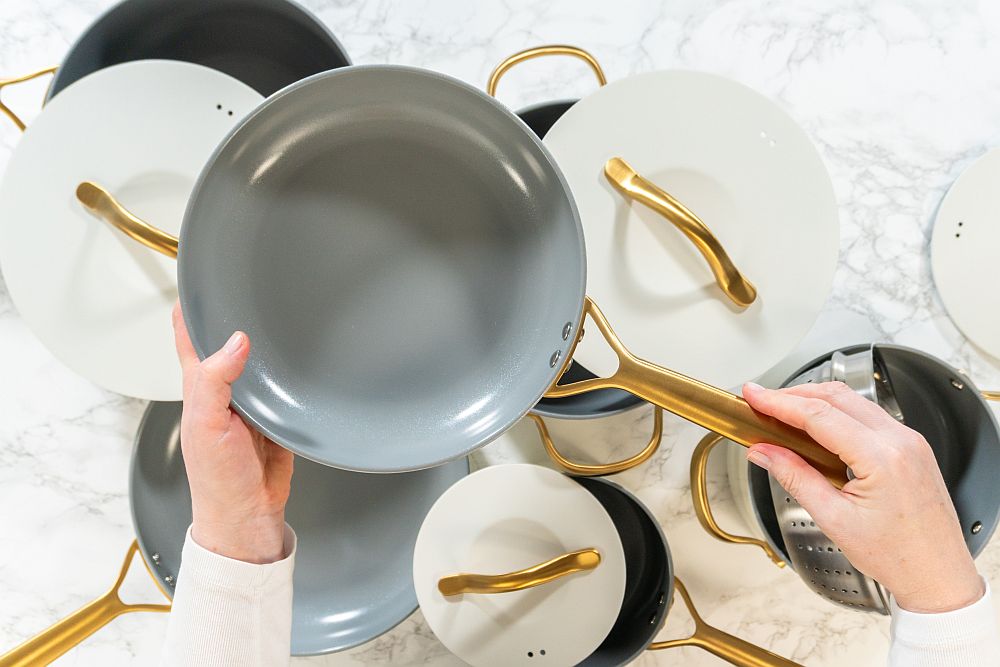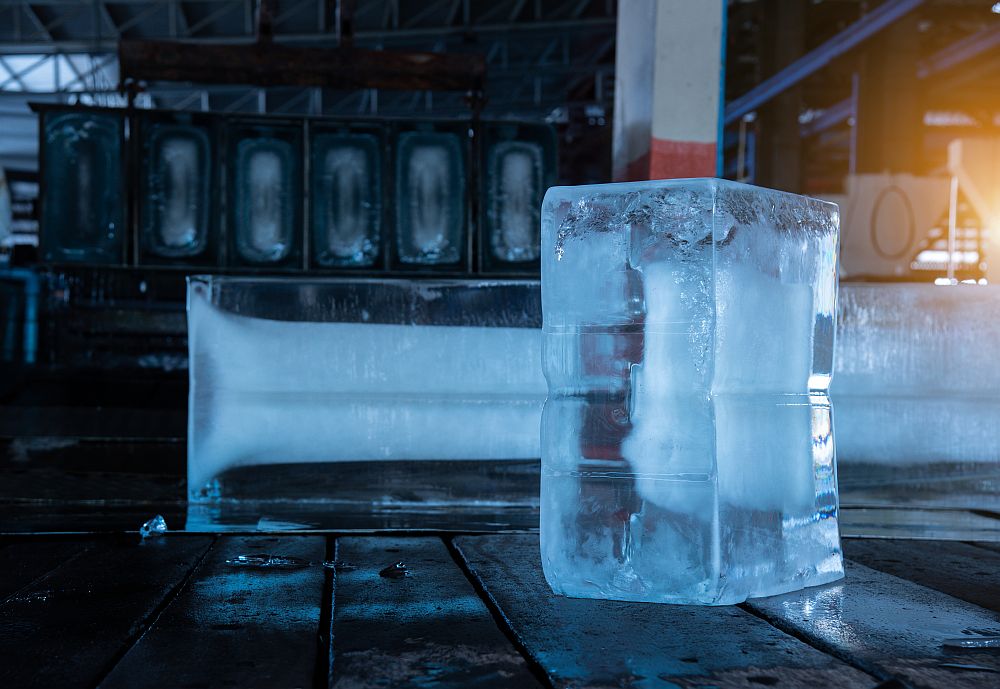
[Image above] Example of a ceramic-coated frying pan. Nonstick cookware may be easier to clean, but the potential negative health effects when the coating flakes or decomposes means it may not be the best choice for your kitchen. Credit: Arina P. Habich / Shutterstock
Ceramics have been used in cookware for thousands of years, with sherds from clay pots providing archeologists insights into the diets and cultural complexity of ancient people. While these traditional ceramic cookware forms remain popular in modern kitchens, ceramics have evolved to fulfill new roles as well, namely as coatings for nonstick pans.
The development of ceramic-coated cookware was partially driven by litigation against DuPont, the maker of Teflon. Teflon is the brand name for a synthetic chemical called polytetrafluoroethylene (PTFE). This chemical was traditionally produced using perfluorooctanoic acid (PFOA), another synthetic chemical that is linked to several diseases upon exposure.
DuPont settled more than 3,550 lawsuits in February 2017 involving individuals and communities affected by PFOA exposure during Teflon production. More recently, in August 2025, New Jersey made a record settlement with DuPont and several of its subsidiaries over PFOA and other “forever chemical” pollution at four industrial sites.
Production of PTFE is not the only time that people are at risk of PFOA exposure, however. When cookware coated with this material is overheated, PTFE can break down into various forever chemicals, which are then released into the air or leached into the food. Thus, it is recommended to not cook with PTFE-coated pans above 570°F.
In contrast to PTFE-coated cookware, ceramic-coated cookware is touted as being nontoxic because it does not contain PTFE or PFOA. However, there are other materials sometimes used in the production of ceramic-coated cookware that may make these pans less safe than they are advertised.
Pitfalls of ceramic-coated cookware
A more accurate term for ceramic-coated cookware would be “quasi-ceramic.” That is because these coatings are created through a sol-gel process. First, a mixture of silica, metal oxides, and binders is sprayed onto a metal pan made from anodized aluminum, cast iron, or stainless steel. Then, the cookware is fired at temperatures ranging from 400°F to 800°F, well below the traditional processing temperature of conventional ceramics (often above 2,000°F).
If these ceramic-coated pans are overheated, they can decompose just like the PTFE coatings, sometimes within months of purchase. Because many of the sol-gel coating compositions are considered proprietary, it has led to questions about what (potentially toxic) chemicals may be released during decomposition.
Organic polymers, for example, may be part of the sol-gel solution. Once the coating breaks down, these chemicals—which have varying toxicity—could leach into the food or be released into the air. Furthermore, while these coatings do not contain PFOA and PTFE, a Good Housekeeping review notes that some may be made with other forever chemicals, so it is important to keep an eye out when shopping for ceramic-coated cookware.
There have also been questions surrounding the potential use of metal oxide nanoparticles in the ceramic coatings. As discussed in a previous CTT, while ceramics such as titanium dioxide may be considered safe in their bulk form, exposure to the nanomaterial form may cause health issues.
In 2020 and 2021, the consumer protection site Lead Safe Mama detected high levels of titanium in the GreenPan, Always Pan, and Caraway brands of ceramic-coated cookware, pointing to the use of titanium dioxide nanoparticles. Another 2016 study also identified titanium dioxide nanoparticles in ceramic-coated pans and showed how it can migrate into food. In 2019, GreenPan faced a class action lawsuit over certain metal oxides used in their coating, particularly potassium titanate. (The case was dismissed in 2020.)
Despite these concerns, whether it be PTFE or ceramic, various market research companies project significant growth of the global nonstick cookware market during the rest of the decade due to its perceived convenience in both cooking and cleaning. Although PTFE-coated cookware currently dominates the market, the ceramic-coated segment is expected to gain ground as countries implement stricter regulations on the use of forever chemicals. (Celebrity endorsements of ceramic-coated cookware have also contributed to the rising popularity.)
Benefits of switching to all-metal or all-ceramic cookware
Though the ease of cleaning nonstick cookware is attractive, the toxicity concerns when the coating flakes off or decomposes means it may be worth the elbow grease to use all-metal or all-ceramic cookware instead. You’ll be rewarded with cookware that lasts longer, is safer, and can handle higher temperatures for that perfect searing and browning effect.
For those who still prefer the allure of nonstick pans, this article on The Strategist offers some suggestions on the best ceramic-coated cookware options in 2025. Additionally, Good Housekeeping recommends one ceramic-coated brand in this review of nonstick pans, which they report is free of PFOA, cadmium, and lead. (Manufacturers have the option of certifying their cookware is free of PFOA and other forever chemicals with NSF, the public health and safety organization.)
As a reminder, no type of nonstick pan will last forever. However, a review on Organic Authority claims ceramic-coated cookware can last up to 10 years if properly cared for. Proper usage entails cooking at low to medium heat, using silicone or wooden tools to stir the cookware’s contents, washing by hand, and storing cookware between dividers. Once a nonstick pan shows any damage to its coating, it should be replaced.
Author
Laurel Sheppard
CTT Categories
- Education


